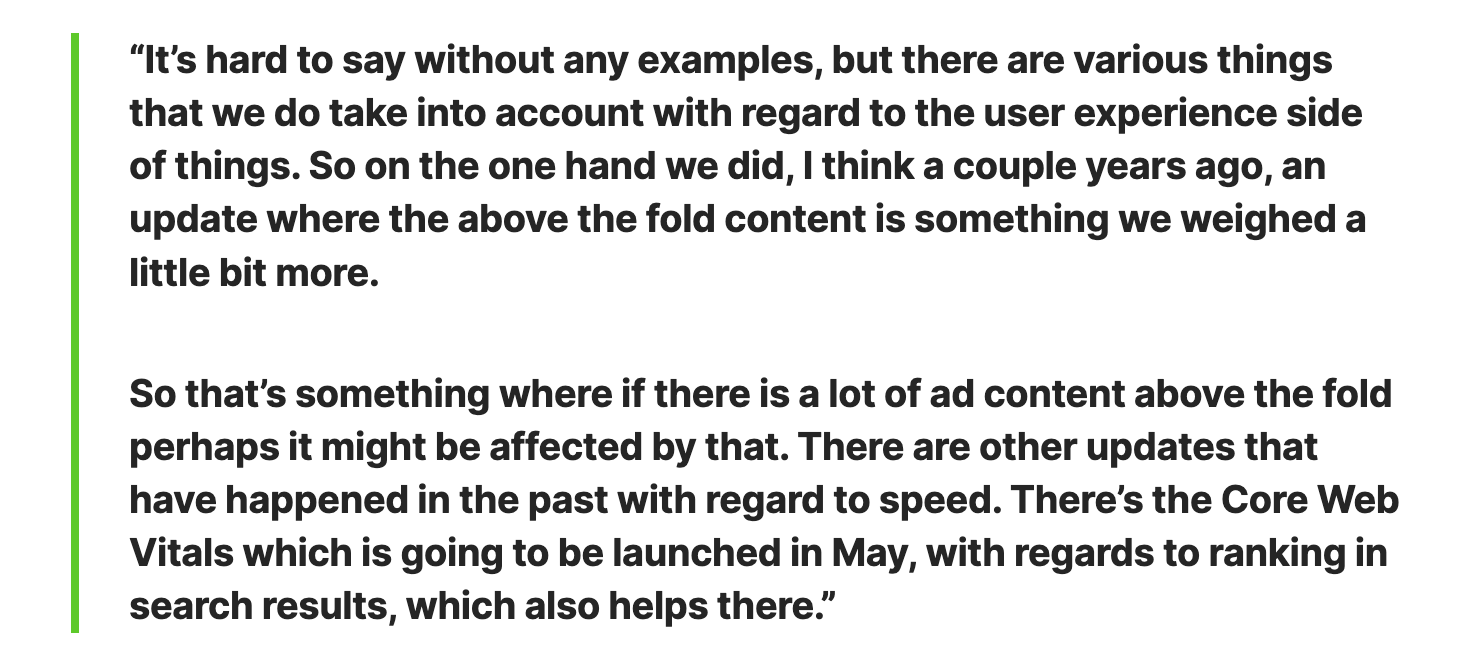For high-traffic websites, five factors dictate whether it is time to find a superior online advertising platform: performance, ad quality, payment terms, innovation, and support.

5 Reasons: Time to Change Online Advertising Platform
#1 — PERFORMANCE
The primary reason for changing your online advertising platform is performance. While the deciding-factor metrics might vary, the main ones we focus on assessing include revenue per session (RPS), eCPM, fill rates, and viewability. Once you notice any of these falling off over time (or underperforming what you’d expect them to), it’s time to start looking for another online advertising platform.
In addition to ad performance metrics, publishers also should consider how their online advertising platform impacts their overall site performance. There are Core Web Vitals reports that should be monitored as part of any ad partner integration. Speed degradation and content layout shift are both major factors in how search engines like Google priority rank sites.
A poorly-optimized online advertising platform can have a drastic, widespread impact on your business, and technological/codebase performance should be considered a top priority when making the final selection.

Poor Ad Performance negatively impacts readers in the form of too many ads, too many similar ads, and too many at the same time.
#2 — AD QUALITY
Another reason to consider changing your online advertising platform is when you’re not satisfied with the quality of the ads being served on your site. If the ads are not relevant to your audience, or if they are intrusive or offensive, it can negatively impact user experience and harm your reputation.
Going a step beyond basic ad quality, many publishers also put heavy emphasis on brand safety — ensuring that ads are displayed on their sites that align with their values and does not pose a risk to their reputation. This includes protecting against ads that are inappropriate or offensive, such as hate speech, violence, pornography, or fake news.
In addition, site speed matters a lot for SEO. Oftentimes, poor advertising technology can slow down even the best sites, which also negatively impacts search traffic.
If your online advertising platform constantly allows low-quality ads to slip through the cracks, it might be time for a change. Your ad provider should enable you to customize the ad experience on your sites and ensure the ads being shown are high quality, relevant, and safe.

Google’s John Mueller to Search Engine Journal RE: overuse of display ads
#3 — PAYMENT TERMS
If you’re not happy with the payment terms of your current online advertising platform, such as a low revenue share or delayed payments, it may be time to consider switching to a provider that offers more favorable terms.
One common complaint among publishers is that some ad providers take a long time to pay out earnings. Publishers may find this frustrating if they need to pay bills or make other financial commitments based on their expected earnings.
Other publishers feel that the revenue share model (or percentage) offered by their ad providers is not fair or transparent enough. Publishers may feel that they are not getting their fair share of ad revenue, or that they are not able to fully understand how revenue is calculated.
Some programmatic ad providers work with you from Day 1 to ensure a positive ROI experience with terms that make sense for your business.
#4 — INNOVATION
Online ad technology is constantly evolving, and providers offer innovative ad formats or targeting options that can improve your results. If your current online advertising platform is not keeping up with the latest trends and innovations, it may be time to explore other options.
#5 — SUPPORT
If you’re not receiving adequate support from your current ad provider, it may be time to look for a provider that offers better customer service and support.
—
FRANK ADVICE:
Deciding When To Switch Your Online Advertising Platform
In general, it’s a good idea to periodically review your ad performance and evaluate whether your current ad provider is meeting your needs. If you find that your current provider is falling short in any of the above areas, it may be time to consider switching to a new provider that better meets your needs.
Keep in mind, there is no one-size-fits-all answer, as the best time of year to change ad providers may vary depending on a variety of factors, such as your niche, audience, and current market trends.
That being said, here are general guidelines that can help you determine the best time to make a switch:
—> End of Quarter/Fiscal Year
Many ad providers have a quarterly or annual budget, so the end of these periods can be a good time to negotiate better rates or switch to a new provider.
For large teams looking to save on their ad costs, it can be a great time to find alternatives in the marketplace offering better rates through lower revenue share terms or flat-rate product licensing.
Other teams might use the opportunity to allocate some of their budget from failing/underperforming areas of their business toward a proven method of monetization. For many small and medium-sized publishers, this might mean introducing programmatic advertising to their site for the first time or upgrading from a self-serve solution like Google AdSense to a robust ad partner with a broad list of SSPs that they work with.
—> Slow Season
If your site (or sites) see seasonal spikes in traffic, it may be wise to switch your online advertising platform during your slow season. This will give you time to test the new provider and make any necessary adjustments before the busy season starts.
While Flexpress offers publishers low-risk options to switch year-round, there are certain times of year we see more publishers looking to switch than others.
For many publishers, March through September are the ideal times to make the switch, as traffic and ad revenue tend to be the most stable throughout the spring and summer months – making it easy to compare performance between ad providers.
For others, January & February are particularly interesting. These months tend to have the lowest ad spend as advertisers recoup from their spending in November & December. As a result, publishers can move during a window where they anticipate the lowest revenue of the year (and the lowest risk in switching).
Lastly, publishers whose content focuses on outdoor/summer activities may find it best to switch ad providers in fall months (October through December) when their business tends to be slowest.
During A Switch To A Different CMS
If you are planning to switch to a new website or content management system (CMS), it may make sense to change ad providers at the same time. This will allow you to optimize your ad placement and ensure that your new site is fully integrated with your ad provider’s platform.
Need a better content management solution? Contact us to learn how Flexpress works hand-in-hand to maximize publisher revenue while optimizing site speed and user experience.
Timing Your Move
Ultimately, the best time to change ad providers will depend on your specific situation and goals. It’s important to thoroughly research potential providers, evaluate their performance metrics and terms, and carefully plan the transition to minimize any disruptions to your ad revenue.




